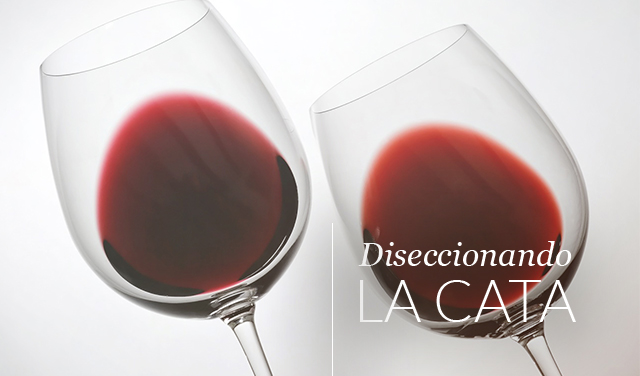Wine Tasting Basics

First of all, why do a wine tasting?
Art? Science? Protocol? Ritual? In essence, tasting is a way of discovering and, most importantly, paying attention to what a wine has to tell us. It gives the wine the time it needs to tell us its story and reveal its personality.
No two wines are the same, meaning that every discovery, every uncorking, brings us new challenges, sensations and moments of pleasure.
In practical terms, we could say that a tasting allows us to do the following:
- Educate our senses. Awaken our curiosity.
- Memorize our perceptions.
- Learn to express them. (Not only in words. Our intuition is also very important.)
- Discover new wines, learn what we like and why.
Basic tips to keep in mind before tasting a wine
A lot has been written on the subject, but in the end what it all comes down to is something as personal and subjective as our own senses, which we can heighten further by creating the right conditions:
The perfect place:
Insofar as it is possible, a tasting should take place in a quiet room, removed from noise, devoid of strong smells, well lit in order to fully appreciate the color and shades of the wine.
The glass:
As always, the glass should be thin, clear and unadorned. Nowadays, it is easy to find highly versatile glasses that can be used for any kind of wine.
The wines:
We should always taste wines at their ideal temperature. Why? Every type of wine expresses the full range of its qualities at its serving temperature. For example, excessively warm temperatures increase the perception of a wine's alcohol content as well as intensifying its acidity. On the other hand, excessively cool temperatures prevent the release of aromas, and our taste buds will perceive little more than "something cold." These temperatures can also augment whatever flaw a wine may have.
The taster (yes, you!):
Relax. This is your moment. Enjoy the experience thoroughly and fine-tune all of your senses in order to perceive the sensations that the wine awakens in you. A full stomach can interfere with this process. This is why it is best to let several hours go by between a meal and a wine tasting.
Avoid using perfume, drinking coffee or smoking before the tasting. And if you have a cold, leave the tasting for another day. You won't be able to smell anything!
A keen eye!
Evaluating the wine visually provides us with far more information than we might initially expect:
- First and foremost: wine is beautiful. Take a moment to admire it!
- The color tells us about the variety, age, state and body of the wine. If the color is bright, passionate and concentrated, we are looking at an equally bright and exuberant wine. If, on the other hand, the color is subtle and delicate, the wine will also be lighter and more fleeting on the palate.
- Individual shades, much like the overall color, point to the evolution of a wine. In reds, for example, a purplish hue indicates a young wine, whereas ochre or brick-red shades are unmistakable traits of a wine that has aged and evolved for a long time. As for whites, the fresh, green highlights of youth give way to the warm shades of gold that are characteristic of mature wines.
- Interestingly, the intensityof the color increases with age in white wines and decreases in reds.
A fine nose...sniff once, twice, three times!
Did you know that your sense of smell is 10,000 times more sensitive than your taste buds? This is why smell is the predominant sense to consider when tasting a wine.
- Firstly, we sniff the glass without moving it to take note of the subtlest aromas. In addition, we can determine if the wine has any potential flaws.
- We then swirl the glass and breathe in before the wine comes to a rest. This allows us to perceive a greater aromatic complexity.
- Finally, we sniff the empty glass to discern the residual aromas conveyed by the alcohol.
- Ready for a challenge? As a bit of fun, we encourage you to try tasting by what is known as retro-nasal olfaction. Just before swallowing the wine, breathe in lightly. If this seems tricky, pinch your nose and let go immediately after swallowing. You'll be surprised by the wine's aromatic expression in the mouth.
Full of flavor
But...where do all of the different flavors come from?
- Sweet: the alcohol and glycerin produced during fermentation emphasize the natural sugar of the grapes. They give wine its softness, lushness and body.
- Salty: there are no salty wines. We do, however, find mineral salts amongst a wine's components that boost the sweet flavors inherent to the fruit (similar to a pinch of salt added to cake dough). In aged wines made in very specific areas, we might come across a hint of iodine.
- Sour: acidity stems from the acids contained within the grape itself or produced during fermentation. They give wine a fresh, lively character.
- Bitter: certain varieties have a particular, natural bitterness, which can become excessive if the grape has not reached optimal ripeness.
What about tannins?
- They are responsible for a wine's astringency, meaning that sense of dryness in the mouth that occurs when drinking certain red wines. One attribute of tannins is that they "solidify" our saliva.
- Tannins are derived from grape seeds, stems and skins. At first, aging wine in wood barrels increases the amount of tannins, but over time it softens them.
- Tannins can be more or less aggressive, and they can also be hard or soft (sweet), depending on the variety and age of the wine.
